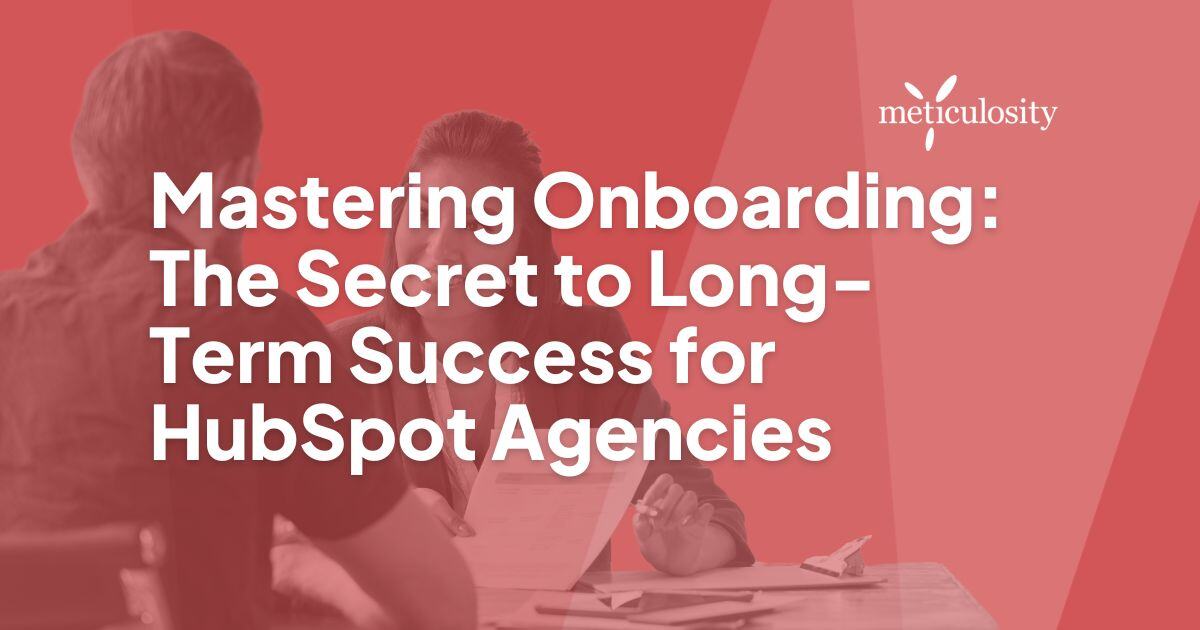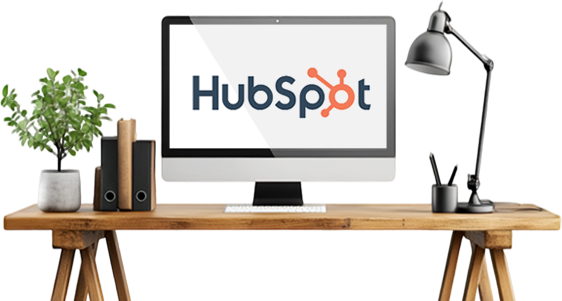Onboarding is more than a checklist; it’s the foundation for successful relationships between HubSpot agencies and their clients. A well-executed onboarding process ensures that clients understand and can maximize the value of the HubSpot platform, leading to smoother transitions, better results, and stronger partnerships. This blog explores why onboarding is critical for HubSpot agencies, the benefits of getting it right, and how it can drive both client retention and long-term growth.
Looking to perfect your onboarding process? Learn more about our HubSpot onboarding services and see how we can help you set your clients up for success.
What Is Onboarding for HubSpot Agencies?
In the context of HubSpot agencies, onboarding refers to the structured process of setting up a client’s HubSpot platform, educating them about its features, and aligning on goals to ensure a seamless start. Key steps in onboarding include:
Discovery and Goal Setting: Understanding the client’s needs, challenges, and objectives.
Platform Configuration: Setting up HubSpot tools, workflows, and data integrations.
Training and Support: Empowering clients with the knowledge and resources to use HubSpot effectively.
Onboarding is where agencies demonstrate their value, laying the groundwork for productive, long-term collaborations.
The Benefits of a Well-Structured Onboarding Process
A thoughtfully designed onboarding process benefits both clients and agencies:
For Clients:
- Accelerates their adoption of the HubSpot platform.
- Provides clarity on how HubSpot aligns with their goals.
- Builds confidence and reduces overwhelm, enabling quicker results.
For Agencies:
- Strengthens trust and credibility with clients.
- Reduces churn by ensuring early success.
- Streamlines workflows, saving time and resources in the long run.
The Risks of Poor Onboarding
Failing to prioritize onboarding can lead to:
- Misaligned Expectations: Clients may feel uncertain about deliverables and timelines.
- Frustration and Confusion: Lack of guidance can overwhelm clients, leading to dissatisfaction.

- Higher Churn Rates: Dissatisfied clients are more likely to end contracts prematurely.
- Operational Strain: Agencies may need to spend more time addressing avoidable issues later.
A subpar onboarding process can damage client relationships and hinder an agency’s growth.
How Effective Onboarding Improves Client Retention
Retention is the cornerstone of a successful HubSpot agency, and onboarding plays a pivotal role in achieving it. Here’s how:
- Laying a Strong Foundation: Clear communication and proper setup establish trust and confidence.
- Encouraging Platform Usage: Training ensures clients understand and actively use HubSpot’s features.
- Delivering Quick Wins: Early results demonstrate value and set a positive tone for the partnership.
- Building Long-Term Trust: Effective onboarding showcases the agency’s expertise and commitment to client success.
Driving Growth Through Onboarding Excellence
Onboarding isn’t just about retention; it’s a growth driver for HubSpot agencies:
- Turning Clients into Advocates: Satisfied clients are more likely to refer others to your agency.
- Accelerating ROI: Faster time-to-value for clients translates into stronger case studies and testimonials.
- Upselling Opportunities: A positive onboarding experience opens the door to offering additional services.
By prioritizing onboarding, agencies can position themselves as indispensable partners in their clients’ growth journeys.
Key Elements of a Successful HubSpot Onboarding Program
To master onboarding, HubSpot agencies should focus on these core elements:
- Customized Plans: Tailor onboarding processes to each client’s specific goals and needs.
- Clear Communication: Set transparent expectations with timelines, deliverables, and regular check-ins.
.jpg?width=663&height=398&name=Key%20Elements%20of%20a%20Successful%20HubSpot%20Onboarding%20Program%20(1).jpg)
- Comprehensive Training: Offer resources and sessions that cater to different learning styles.
- Dedicated Support: Provide accessible help and guidance during and after onboarding.
- Continuous Improvement: Gather feedback from clients to refine and enhance your onboarding process.
How to Get Started with Improving Your Onboarding Process
Here are steps to enhance your agency’s onboarding:
- Audit Your Current Process: Identify gaps and areas for improvement.
- Leverage Tools and Templates: Use project management tools and onboarding checklists to standardize workflows.
- Align Your Team: Ensure everyone understands and follows onboarding best practices.
- Gather Client Feedback: Use surveys to refine your process and address client needs.
Conclusion
Mastering onboarding is the secret to long-term success for HubSpot agencies. By investing in a well-structured process, agencies can ensure client satisfaction, strengthen relationships, and unlock opportunities for growth. Start by assessing your current onboarding approach and implementing the best practices discussed here to transform your client experiences.
Want to take your onboarding to the next level? Explore our HubSpot onboarding services and discover how we can help your agency and clients thrive!
Frequently Asked Questions
1. What is the typical timeline for HubSpot onboarding?
The timeline can vary depending on the complexity of the client’s requirements. However, a standard onboarding process usually takes between 4 to 8 weeks.
2. What should be included in an onboarding checklist?
An onboarding checklist should cover discovery and goal setting, platform configuration, training sessions, data migration, and clear communication about timelines and deliverables.
3. How can agencies ensure client engagement during onboarding?
Frequent check-ins, tailored training, and providing actionable insights keep clients involved and invested in the onboarding process.
4. What tools can help streamline onboarding?
Project management tools like Asana or Monday.com, along with HubSpot’s inbuilt features such as task tracking and reporting dashboards, can enhance onboarding efficiency.
5. How do you handle challenges during onboarding?
Anticipate common challenges by setting realistic expectations upfront, maintaining open communication, and being flexible in addressing client feedback or unforeseen roadblocks.







